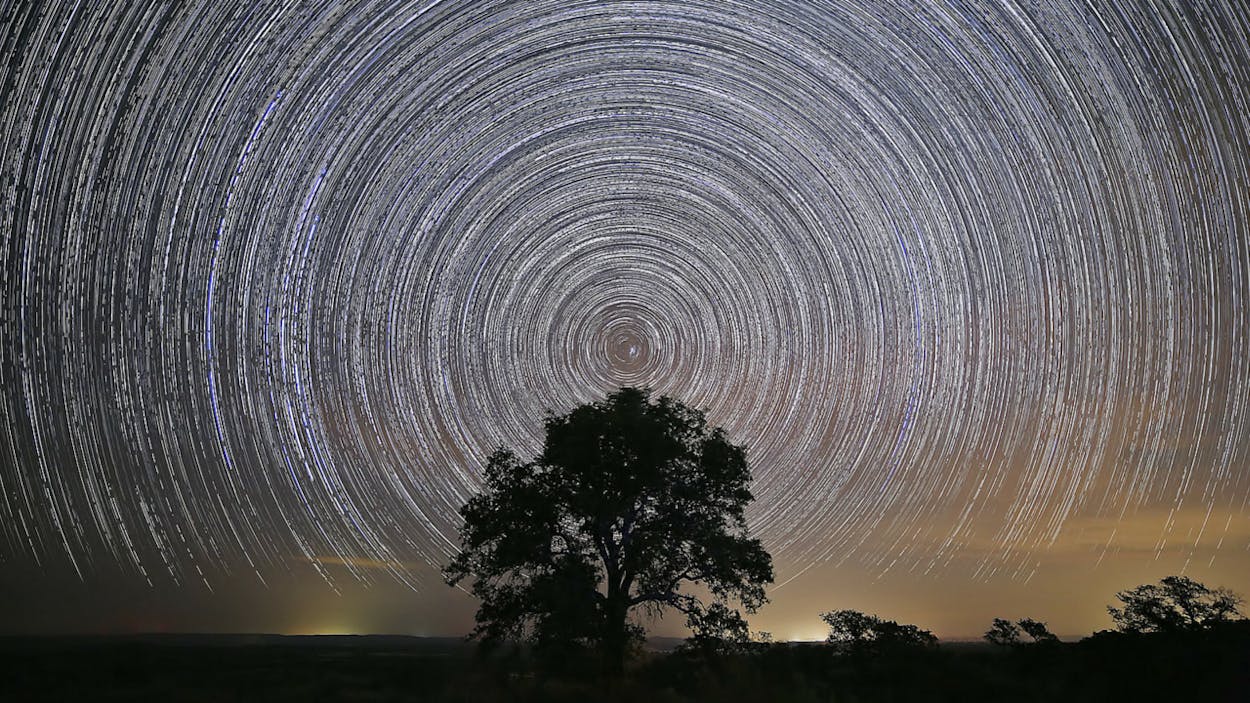Update (August 10, 2016): The Perseid meteor shower has begun its stunning annual display and is set to reach its peak performance tomorrow night, one that should be even more spectacular than years past thanks to Jupiter’s intense gravity. In other words, you’ll want to make plans to be in a good stargazing spot (like those pictured below) to see the estimated 160 to 200 streaks of glowing debris that will be lighting up the night sky each hour.
For viewing tips and more recommended locations in Texas, check out:
- this Spacedex post and comments section
- TPWD’s stargazing calendar, for info on upcoming events like the Perseid Night Hike at Enchanted Rock
- StarDate’s latest “Perseid Meteors” article
As the song proudly proclaims, our prairie sky is wide and high, and, thanks to the state’s many remote acres, it’s still pretty pristine too. Of course, you’ve got to get far away from the urban sprawl to truly appreciate the celestial wonders overhead, which means you’ve got an easy excuse for your next long drive.
This month, all five “bright” planets (Jupiter, Mars, Mercury, Saturn, and Venus), which can be seen with the naked eye, are aligning in the pre-dawn sky for the first time in a decade. And stay tuned to StarDate, the nationally syndicated radio program hosted by smooth-voiced San Antonio native Sandy Wood, for details on the other cosmic events that will also be on brilliant display in February, including Sirius and Canopus, the two brightest stars in the night sky; Rigel, Orion’s super-hot supergiant; and the faintly glowing Horsehead Nebula. (Oh, and a head’s up for next month: the Texas Night Sky Festival will be held in Dripping Springs on March 5. To find stargazing events year-round, consult the TPWD’s Dark Skies Program calendar.)
Here are a few of the best places to stargaze around the state, as evidenced by these double-tap-worthy shots on Instagram.
Copper Breaks State Park // This Panhandle gem, one of the first Texas state parks to be designated an International Dark Sky Park, has been hosting its regular StarWalks for more than twenty years.
Enchanted Rock State Natural Area // Awarded “gold-tier” status by the International Dark-Sky Association, this popular hikers’ paradise on the Llano Uplift offers Rock Star Parties and real-time dark-sky monitoring for those who really want to geek out.
High Island // This small, unincorporated coastal town on the Bolivar Peninsula brings birders by day and stargazers by night. Drive the Bolivar Loop until you find a particularly pitch-black stretch, and be sure to check the stargazing forecast before you go.
Caprock Canyons State Park // Bring a lawn chair for the Constellations in the Canyons gatherings with a local astronomer (large telescopes are provided) or bring your hiking shoes and set off on the ninety miles of multi-use trails at this Panhandle park.
McDonald Observatory // Established in 1939, this observatory near Fort Davis is on prime stargazing property: it’s situated on a latitude near the equator and is one of the darkest patches in the U.S. And its thrice-weekly Star Parties, held every Tuesday, Friday, and Saturday evenings, are so popular that reservations are strongly encouraged.







